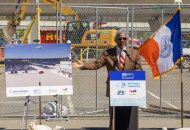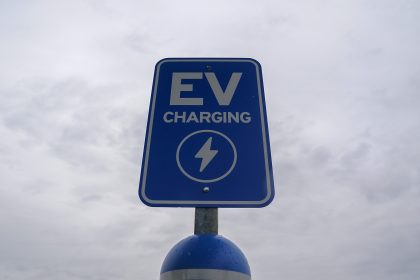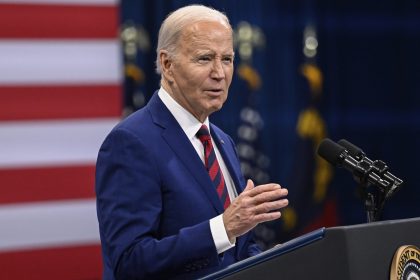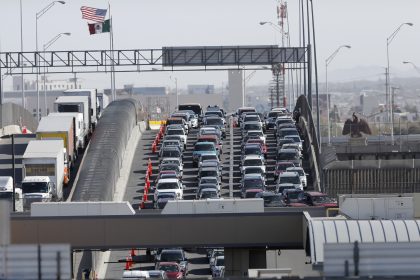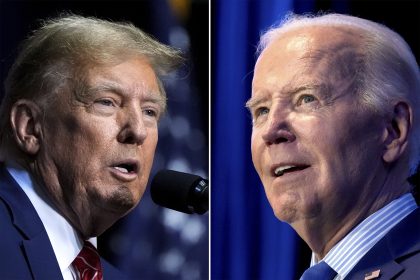Trump Hasn’t Recovered From Tailspin Set Off by Raucous Debate Performance, Poll Shows
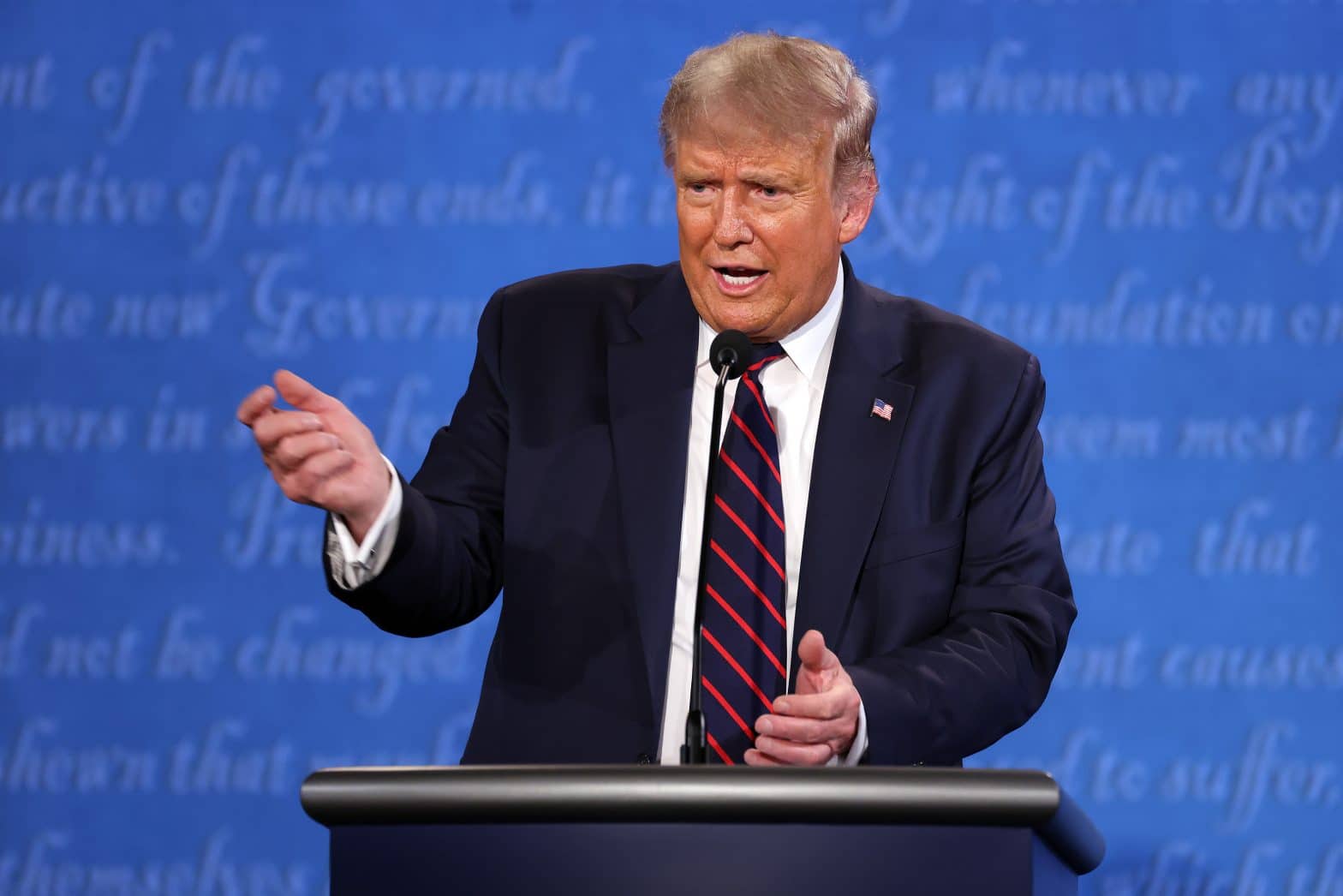
WASHINGTON — With three weeks left until election day, President Donald Trump has not recovered from the self-inflicted wounds of his first debate with Joe Biden and, instead, has sunk further behind his challenger, a new USC Dornsife poll shows.
The latest data show the unusual extent to which the Sept. 29 debate continues to shape the campaign’s final stretch.
The encounter in Cleveland, dominated by Trump’s repeated interruptions and his cryptic statement that seemingly welcomed a right-wing extremist group, appears to be the exception to the usual rule that the impact of debates fades quickly.
The damage the debate did to Trump’s standing has persisted through his bout with COVID-19, leaving him with a deep deficit and little time to recover. (Trump’s refusal to participate in an Oct. 15 virtual debate led to its cancellation; the final debate is set for Oct. 22.)
Before the September debate, voters had relatively tepid expectations for how either candidate would do. Trump significantly underperformed those.
On a 0-to-100 scale, Trump’s performance in the debate came in 18 points below what voters had expected, a comparison of those surveyed before and since the debate shows. Independents who lean toward the GOP — a key bloc of potential swing voters — reported the most disappointment. Their rating of Trump’s performance came in 24 points below their pre-debate expectations, the poll found.
Biden’s performance was closer to expectations.
Trump also lost ground, and Biden gained, on the question of which candidate is more mentally fit for the presidency. The former vice president’s advantage on that question grew from 12 points before the debate to 19 points since then.
Since the debate, roughly half the voters polled said they do not believe Trump is mentally fit.
Voters’ view of both Biden’s mental and physical fitness improved after the debate — something Democratic operatives had hoped to see after Trump, 74, and his allies spent much of the spring and summer pushing to portray the 77-year-old former vice president as doddering.
The overall impact has been to swell Biden’s lead. The USC Dornsife poll tracks the race each day, using a 14-day rolling average. As predebate interviews have cycled out of that average, Biden’s lead has climbed steadily from 9 points on the day of the debate to 13 points as of Tuesday — 54% to 41%.
Other recent nationwide surveys have shown similar results, with Biden holding a 12-point lead, 54% to 42%, among likely voters in a Washington Post/ABC poll released Monday, 10 points in the most recent Fox News survey, and 10 points in a survey of more than 10,000 registered voters by the Pew Research Center.
Biden similarly leads in most polls of battleground states. The Trump campaign has pulled back on advertising in several states, including Wisconsin and Michigan, which were key to his 2016 victory, and the competition is now taking place most intensely in three states that Trump won four years ago, Pennsylvania, Florida and Arizona.
It’s still possible for Trump to engineer a comeback now that he’s returned to the campaign trail: The history of presidential elections over the last four decades includes a couple of contests in which shifts of 7 percentage points took place late in the campaign. But Trump would need a bigger shift than that to get within striking distance of an electoral college majority, and there’s no question he finds himself in a deep hole with time — and campaign cash — running short and millions of voters already casting ballots.
Biden’s current lead is nearly twice as large as the 7-point advantage Hillary Clinton had in national polling averages three weeks before the 2016 election.
Several other factors distinguish Biden’s lead from Clinton’s:
— Clinton never hit 50% in averages of polls taken after she and Trump clinched their respective nominations, making her vulnerable to a late shift by undecided voters. Biden has stood at or above 50% in polling averages consistently since June.
— The Clinton-Trump race featured constant swings in the candidates’ standings; the current race, by contrast, has set records for stability.
— And four years ago, voters had strongly negative impressions of both Trump and Clinton. This year, voters have a negative impression of Trump, 60% to 39%, but not of Biden. Voters divide closely on him, but his overall standing is positive: 51% favorable, 47% unfavorable.
— By contrast with the “hold your nose and vote” image of 2016, fewer voters now report themselves undecided — only 4% — and fewer intend to vote for third-party candidates.
“The debate was really bad for Trump,” said Bob Shrum, the veteran Democratic strategist who directs USC’s Center for the Political Future, which co-sponsors the poll. To the extent that there’s good news for the president, it’s that his standing may have hit bottom, Shrum said. “I don’t know how much more vote is available” for Biden.
Both candidates get support from the vast majority of people who voted for their party last time. But the defectors are not evenly distributed: Trump voters who have switched outnumber former Clinton voters who have changed sides. Trump is also losing among 2016 third-party voters and among those who did not vote that year.
Since the debate, the remaining undecided or loosely decided voters have firmed up their views, the latest polling shows.
Latino voters, in particular, have made up their minds in recent weeks. In USC Dornsife polling in late summer, Latino voters made up a disproportionate share of the remaining undecided voters. Since August, however, the share of Latino voters reporting themselves as undecided has dropped from 13% to 7%. As that has happened, their support for Biden has risen from 62% to 66%. Trump gets support from 27%.
That 39-point advantage for the Democrat is about the same as in the 2016 election, according to Pew studies. That rebuts a concern some Democrats had during the spring and summer that Biden would fail to appeal to Latino voters, who heavily favored Vermont Sen. Bernie Sanders during the presidential primaries.
By contrast, the split among white voters has shifted. Biden appears to be winning some of the white, non-college-educated voters whose backing allowed Trump to eke out wins in Wisconsin, Michigan and Pennsylvania in 2016. The poll shows Biden favored by 35% of white voters without a college degree, compared with 28% who backed Clinton in 2016, according to Pew’s data.
Biden’s gain in recent weeks has come particularly with blue-collar white women, a group that still favors Trump, but by a significantly narrower margin than predebate.
Overall, the poll illustrates the deep, persistent divides that have defined politics in the Trump era.
On race: Trump leads among white voters by 10 points, 53% to 43%, while Biden leads by 80 points among Black voters, 87% to 7%. In addition to his 39-point lead among Latino voters, Biden also has a 35-point lead among other voters of color, a group that includes Asian American and Native American voters.
On education: Trump leads 61% to 35% among white people without a college degree, while Biden leads 55% to 41% among white people with a degree. That 40-point gap is significantly bigger than the divide in 2016, reflecting a steady movement of college-educated voters away from Republicans during Trump’s tenure.
On gender, women favor Biden by 19 percentage points, while men favor him by 3. Biden’s small lead among men is new; he trailed among male voters before the debate.
The gender gap exists mostly among white women. Among Black voters, the poll finds almost no gender difference. Among Latino voters, Biden appears to do slightly better among women than men, but the difference is well within the poll’s margin of error.
On geography: Trump leads 62% to 34% among rural residents, but Biden enjoys a 71% to 25% advantage among city dwellers. Biden also leads 54% to 41% among suburbanites, a group to whom Trump has tried to appeal, and has also battled Trump nearly to a draw among residents of small towns.
The poll also provides some insight into why Trump does not benefit more from the edge voters give him on handling the U.S. economy. In addition to asking which candidate would handle the issue better, the poll also asked people to rate how they expected the economy would fare under either of the two.
Predictably, Republicans thought the economy would prosper under Trump and swoon under Biden, and Democrats felt the opposite. Independents, however, expect little difference, indicating that although they give Trump an advantage in handling the economy, they don’t worry much either way.
“That allows them to rely more on their other top issues — handling the coronavirus, racial unity and healthcare,” on all of which Biden has a significant advantage, said Jill Darling, who directs the survey.
The USC Dornsife poll, a joint project of the university’s Center for Economic and Social Research and the Center for the Political Future, tracks the views of a panel of more than 8,000 eligible voters. The poll surveys each panel member every 14 days. The current results are based on responses from Sept. 22 to Oct. 11 from 5,010 panel members, of whom 4,518 are registered voters. Roughly half were surveyed before the debate and half after.
Results are weighted to reflect U.S. Census Bureau figures for demographic characteristics including gender, race and education. The estimated error range for the poll’s full sample is roughly 2 percentage points in either direction.
A complete description of the poll’s methodology, along with the text of the questions asked and the full data tables, is available on the USC Dornsife website.
———
©2020 Los Angeles Times
Distributed by Tribune Content Agency, LLC.











